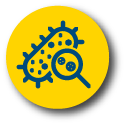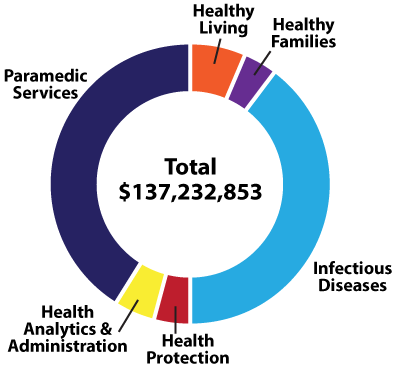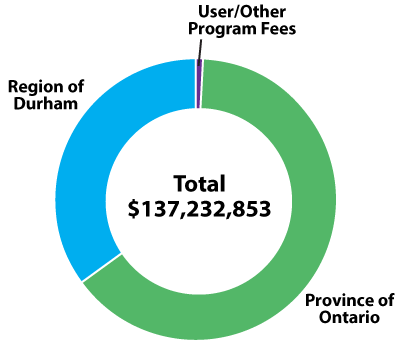
2021 Health Check-Up!
Message from the Commissioner & Medical Officer of Health
 2021 marks the second calendar year living with the COVID-19 pandemic, the biggest public health crisis our country has faced in a century. At Durham Region Health Department (DRHD), this meant another year of prioritizing COVID-19 response efforts, while providing and adapting some of our highest priority programs. For area residents, 2021 represented a second year of compounding challenges, including, illness and death, economic hardships, job losses, mental health struggles, a worsening opioid crisis, and many others. It was a tough year for nearly everyone, and many of us are still feeling the heavy burden that two years of pandemic stress created.
2021 marks the second calendar year living with the COVID-19 pandemic, the biggest public health crisis our country has faced in a century. At Durham Region Health Department (DRHD), this meant another year of prioritizing COVID-19 response efforts, while providing and adapting some of our highest priority programs. For area residents, 2021 represented a second year of compounding challenges, including, illness and death, economic hardships, job losses, mental health struggles, a worsening opioid crisis, and many others. It was a tough year for nearly everyone, and many of us are still feeling the heavy burden that two years of pandemic stress created.
Despite the challenges we endured, I am pleased to highlight some 2021 accomplishments. I am inspired by the efforts of DRHD staff, community partners, and community members in the ongoing fight against COVID-19. By year-end, approximately 80 per cent of Durham’s population aged five and older completed their primary COVID-19 vaccination series, rolling up their sleeves to protect themselves and their community. Behind this success, the team at DRHD, Regional colleagues, the provincial government, and many partners like Lakeridge Health, local pharmacies, primary care providers, and community groups worked hard to get over 1.2 million doses of COVID-19 vaccines into the arms of people in Durham.
I am proud of the collaborative response efforts and grateful to everyone that played a role in our successful local vaccination campaign. This includes the people planning and managing Durham’s vaccine rollout, the health professionals administering vaccines, the teams operating vaccination sites, and everyone who got vaccinated. Thank you for participating in the country’s largest mass vaccination roll-out ever!
I am grateful to the team at DRHD who worked on pandemic response activities, and those that worked on the restoration of regular programs, continuing to provide high-priority programs and services, and those that split their time between COVID-19 response activities and their regular responsibilities. This includes the teams that worked on case and contact management, outbreak investigations and outbreak management, those at the oral health clinic and sexual health clinics, Healthy Babies Healthy Children and Infant and Child Development staff, public health inspectors that continued with priority inspections, paramedics, epidemiologists, and the communications staff. Your jobs are invaluable to our community, and I appreciate the flexibility you demonstrated while managing your work during these difficult times.
By late summer, amid the positive gains made with lower COVID-19 cases and high vaccination rates, many people grew hopeful that the threat of COVID-19 was nearly behind us. Although the primary series of COVID-19 vaccines proved to protect against severe illness and death, unfortunately vaccines did not stop virus transmission all-together. This reality was clear by December, when the Omicron variant spread rapidly across Ontario and the country.
By December, Omicron had infected so many Ontarians that testing sites and case and contact management services were unable to keep pace with the number of people falling ill. At the same time, all levels of government raced to roll-out COVID-19 vaccine boosters to the general population aged 18 and older, hoping to boost waning immunity. Unfortunately, there was not enough vaccine supply to meet the needs of the eligible population at the time, and unfortunately, 2021 ended with a high number of positive COVID-19 cases and strict COVID-19 measures.
Despite the rapid spread of the Omicron variant, our collective efforts throughout 2020 and 2021 saved many lives. I recognize the immense amount of patience and resilience it takes to push through pandemic fatigue. The COVID-19 pandemic has been difficult on all of us. That’s why it is more important than ever to find ways to show kindness and compassion to our neighbours, strangers, loved ones and ourselves. With COVID-19 being a reality in the foreseeable future, we need to support each other, learn from our experiences, and work together to help our community be healthy and resilient.
Robert Kyle, BSc, MD, MHSc, CCFP, FRCPC, FACPM
Key Health Department Achievements
2021 COVID-19 response in numbers
Durham Region Health Department (DRHD) engaged in COVID-19 vaccine administration and many COVID-19 response activities to reduce the spread of illness and protect the health and safety of area residents.
Vaccine administration
|
6,975,179 clicks on DRHD’s online vaccine appointment booking landing page. |
|
92 per cent of clients reported being very satisfied with their overall experience at DRHD and Lakeridge Health clinics, based on responses from 16,516 completed surveys. |
|
179 immunization clinics held in collaboration with community agencies for priority populations. |
COVID-19 response
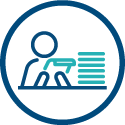 129,421 test results received and distributed for follow-up.
129,421 test results received and distributed for follow-up. 77,639 calls to cases and contacts.
77,639 calls to cases and contacts. 50,461 COVID-19 phone interactions with residents and community partners.
50,461 COVID-19 phone interactions with residents and community partners. 29,389 positive COVID-19 cases and their contacts followed by public health nurses.
29,389 positive COVID-19 cases and their contacts followed by public health nurses. 11,994 investigations in facilities.
11,994 investigations in facilities.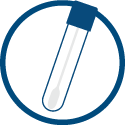 4,202 testing kits prepared by administrative support staff.
4,202 testing kits prepared by administrative support staff.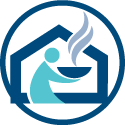 2,694 investigations/inquiries regarding priority population settings.
2,694 investigations/inquiries regarding priority population settings. 243 outbreaks managed by public health inspectors in congregate living settings, workplaces and at community events.
243 outbreaks managed by public health inspectors in congregate living settings, workplaces and at community events. 126 outbreaks managed by public health inspectors in long-term care homes, retirement homes, and hospitals.
126 outbreaks managed by public health inspectors in long-term care homes, retirement homes, and hospitals.In addition to responsibilities related to COVID-19, DRHD operated routine programming when possible. DRHD’s regular program accomplishments are found in this report under the regular programs and services section.
DRHD's COVID-19 response; January to December 2021
| This timeline provides a month-by-month summary of major milestones achieved during the vaccine roll-out of COVID-19 vaccines across Durham Region |
|---|
|
January: 16,272 COVID-19 vaccines administered in Durham Ontario was in Phase One of its COVID-19 vaccine roll-out. Due to a limited vaccine supply provincially, first doses were reserved for high-risk population groups, starting with those living in long-term care and retirement homes. All Durham residents in long-term care and retirement homes received their first dose of a COVID-19 vaccine by January 14. |
|
February: 16,131 COVID-19 vaccines were administered in Durham this month Provincial COVID-19 vaccine supply remained limited, so vaccines continued to be reserved for residents living in long-term care and retirement homes. By February 7, all Durham Region residents in long-term care and retirement homes completed their two-dose vaccine series. Other high-risk population groups identified in Phase One of Ontario’s vaccine roll-out plan became eligible for vaccination. |
|
March: 59,696 COVID-19 vaccines were administered in Durham this month Vaccine supply increased provincially and DRHD opened its first mass vaccination sites, starting with a recreation complex in Pickering. By late March, Ontario entered Phase Two of its vaccine roll-out and first doses were administered based on priority sequencing. |
|
April: 140,054 COVID-19 vaccines were administered in Durham this month Vaccine supply continued to grow and eligibility for first dose appointments expanded to new age groups and priority groups, as identified by the Ministry of Health in Phase Two of Ontario’s vaccine roll-out plan. |
|
May: 183,952 COVID-19 vaccines were administered in Durham this month By May 17, first dose vaccine appointments were offered to all adults aged 18 and older, which marked the start of Phase Three of Ontario’s vaccine roll-out plan. By May 25, youth aged 12 to 17 became eligible for vaccination. Some priority groups were offered their second doses. |
|
June: 250,119 COVID-19 vaccines were administered in Durham this month Ontario’s COVID-19 vaccine supply continued to grow. This month, additional residents became eligible for second doses based on priority sequencing. By June 21, Durham’s adult population (aged 18 and older) became eligible for second doses; then five days later, eligibility for second doses expanded to youth aged 12 and older. Most (75 per cent) vaccines administered in June were second doses, which is a shift from previous months where first doses were proportionally higher. From June 20 to 24, Durham Region clinics were impacted by one brand’s vaccine shipment delay, yet June still saw peak numbers of COVID-19 vaccines administered in Durham. |
|
July: 216,831 COVID-19 vaccines were administered in Durham this month Ontario’s COVID-19 vaccine supply remained stable and by July 31, over 880,000 doses of COVID-19 vaccines were administered. Approximately 79 per cent of Durham’s population aged 12 and older completed their two-dose COVID-19 vaccine series. Most (91 per cent) COVID-19 vaccines administered in Durham in July were second doses. |
|
August: 62,139 COVID-19 vaccines were administered in Durham this month Most (75 per cent) COVID-19 vaccines administered in Durham in August were second doses. With stable vaccine supply and all residents aged 12 and older eligible for their second dose, boosters were offered in priority sequence starting with severely immunocompromised individuals. By August 14, approximately 80 per cent of Durham’s population completed their two-dose series of the COVID-19 vaccine and the overall demand for vaccine appointments slowed down, signalling that DRHD needed to wind down its large-scale clinics. The wind-down process began on August 14, and this allowed DRHD to shift its resources and restore some previously suspended programs. To ensure vaccines were still accessible to Durham Region residents, DRHD and the province continued to offer mobile and pop-up clinics. |
|
September: 45,810 COVID-19 vaccines were administered in Durham this month Vaccine passports were rolled out across Ontario on September 22. Nearly all (93 per cent) vaccines administered in Durham this month were first and second dose vaccines. Some new population groups became eligible to receive COVID-19 vaccine boosters, and by month’s-end, 3,258 boosters were administered in Durham Region. |
|
October: 31,993 COVID-19 vaccines were administered in Durham this month Durham achieved a major milestone by administering more than one million doses of COVID-19 vaccines locally. This month, 30 per cent of vaccines administered in Durham Region were first doses, 61 per cent were second doses, and eight per cent were boosters. |
|
November: 39,840 COVID-19 vaccines were administered in Durham this month First dose appointments were offered to children aged five to 11 and by the end of the month, over 7,000 first doses were administered to this age group in Durham. Nearly half (47 per cent) of all doses administered in November were boosters. |
|
December: 146,797 COVID-19 vaccines were administered in Durham this month In December, most (84 per cent) COVID-19 vaccines administered in Durham Region were boosters. With the emergence of the highly transmissible Omicron variant, the demand for boosters grew, and DRHD, along with local and provincial partners ramped up capacity at immunization clinics. |
|
2021 COVID-19 trends in Durham
| Below is a summary of local trends, followed by a graph showing the new daily case counts for the year. |
|---|
|
|
|
|
|
|
|
|
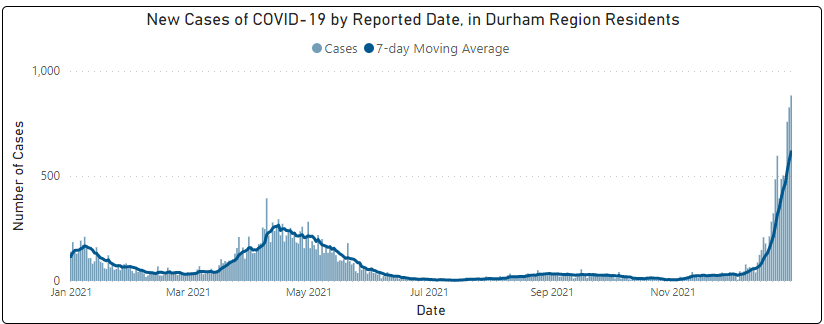 |
COVID-19 response activities
| Case and contact management |
|
Case management involves but is not limited to investigation of disease exposure, monitoring, health education, and contact assessment. Contact management activities include calling identified COVID-19 contacts, assessing exposure risks, providing health education and recommendations based on risks, and monitoring as appropriate.
Public health nurses rose to new challenges In 2021, Durham Region experienced a significant increase in the number of cases and contacts compared to the previous year. In December, 883 cases were reported, setting a record for the highest number of new cases in a 24-hour period in Durham Region at that time. Despite the high number of cases, the nurses at Durham Region Health Department (DRHD) continued to provide timely support, case and contact management and health education to Durham Region residents and community stakeholders, including schools. Nurses received positive feedback from clients such as: "I called into the public health department to ask some questions and a nurse went out of her way to return my call and answer my questions, going the extra mile... I am blessed to have come into contact with nurses at DRHD, and I wanted to make sure their kindness and understanding and care were noted. This has been a stressful experience and I can say that your staff made it so much easier on me. Everything has moved quickly, and I understand how busy this team is and the weight of their heavy workload. I would give them all big hugs if I could. Many thanks!" By the end of December, the Provincial government changed COVID-19 testing and case and contact management services, requiring public health units across Ontario to focus on priority populations. This meant that DRHD would no longer provide one-on-one case and contact management services to the general public. These changes were implemented across Ontario to prioritize high-risk populations in response to the rapidly growing daily case counts and limited resources. DRHD nurses quickly adapted to these changes and shifted to provide support for those who needed it most. For the general public, DRHD created an online information hub (durham.ca/covidinfohub) so Durham Region residents could access case and contact instructions as needed. |
| Communications |
|
|
| Inspections and investigations |
|
Public health inspectors supported the safe reopening of businesses Public health inspectors (PHIs) provided ongoing COVID-19 guidance and advice for businesses and organizations to support the safe reopening of our community. As COVID-19 measures changed multiple times throughout 2021, businesses and organizations had to quickly adapt how they operated. With constantly changing rules, many businesses and organizations needed support to stay on top of requirements. The HPD saw this need and provided support by creating an online toolkit with resources that describe Ministry of Health requirements, in addition to offering helpful COVID-19 safety tips. Since public health measures impacted specific sectors differently, HPD also created sector specific guidance, including guidance focusing on the agri-business sector, child care sector, and the transportation sector, to name a few. In addition, as some businesses needed more personalized help, PHIs also responded to numerous phone calls received through the Durham Health Connection Line, and directly replied to emails regarding a variety of questions. |
| Instructions and orders |
|
|
| Outbreak management |
|
Public health inspectors worked to prevent COVID-19 outbreaks In 2021, while case numbers were increasing across Durham Region, DRHD also faced a growing number of outbreaks in long-term care homes and retirement homes, congregate living settings, childcare centres, workplaces, migrant farms, and schools. PHIs relied on lessons from the first two waves of the pandemic and focused efforts on protecting people in the highest-risk settings. Outbreak management efforts included:
|
| School-focused nurses |
|
Nurses worked to help reduce COVID-19 outbreaks in schools In 2021, school-focused nurses worked with school administrators and staff to implement enhanced public health measures, managed 69 school outbreaks, and performed case and contact management of 917 school-related cases. One nurse recounted that, "School Administrators were very thankful for a designated school nurse who they could reach out to directly. Many principals expressed gratitude for making the process simple for them, as they faced ongoing changes." In addition, vaccination clinics were offered in the school environment and nurses received numerous positive comments from school staff, students, and their families. One nurse explained, "I remember talking to a principal at a school in Oshawa who stated they were so grateful we were going into schools because many of their families didn’t have transportation, had language barriers, and found the school clinics more accessible." School-focused nurses worked closely with all school board partners to support in-person learning. Durham Region Health Department commends all local school boards and schools for their crucial efforts to support their communities’ health and safety.
|
| Surveillance |
|
COVID-19 vaccination data and wastewater surveillance became available online As COVID-19 grew more complex, Durham Region Health Department (DRHD) continued to expand information on the COVID-19 Data Tracker to help the community better understand the local context of the pandemic and DRHD’s response. The vaccinations tab was added to the Tracker in March 2021, soon after mass immunization clinics began administering vaccines to residents. Initial reporting focused on the number of doses administered, but soon the Tracker expanded to report on doses administered by setting (i.e., pharmacies and primary care), and the percentage of residents vaccinated by age and municipality. Later, coverage rates by health neighbourhood encouraged more outreach towards areas with lower vaccination rates. DRHD partnered with the Region of Durham Works Department and Ontario Tech University to collect, analyze, and report on COVID-19 in wastewater. SARS-CoV-2 (the COVID-19 virus) viral fragments are extracted and detected from seven Durham Region sites. These data are part of a provincial wastewater surveillance hub supported by the Ontario Ministry of the Environment, Conservation and Parks. People with COVID-19 can shed the virus in their stool, regardless of whether a person has symptoms, has been tested for, or diagnosed with COVID-19. The amount of virus in wastewater can be measured and when combined with public health data, this information can provide an estimate of COVID-19 infection trends in the community. Wastewater data become even more important when COVID-19 testing is limited to individuals at highest-risk, as results indicate overall COVID-19 levels in the community. |
| Paramedic services and COVID-19 support |
|
Region of Durham Paramedic Services fought COVID-19 on buses In February 2021, RDPS operated mobile COVID-19 testing clinics inside three retired Durham Region Transit buses. These modified buses enabled paramedics to provide testing for up to 30 people per hour and were designed to reach residents who could not travel to a regular assessment centre. RDPS’s mobile testing clinics travelled to schools, long-term care homes, workplaces, and areas with vulnerable populations, administering over 5,000 COVID-19 tests on buses. As COVID-19 vaccinations became available, the buses RDPS used for mobile testing clinics were converted to vaccination clinics. Buses enabled RDPS to travel to neighbourhoods that did not have local mass vaccination clinics, therefore, helping to reduce barriers to getting vaccinated. These modified buses travelled to mall parking lots, local parks, congregate living settings, and other community locations. The RDPS mobile vaccination clinics were an essential part of Durham Region Health Department’s strategy to bring vaccines to every corner of Durham Region, allowing RDPS to administer over 20,000 doses on buses. |
| Testing support |
|
|
Regular programs and services
Due to the demands required of Durham Region Health Department (DRHD) for COVID-19 response, for most of 2021 many regular programs and services were suspended to allow DRHD to allocate staff to support pandemic response efforts. Where possible, high-priority programs and services continued in a modified way. The programs and services that continued during the pandemic, and other restored programs are described in this section.
| Business Affairs |
|
Administrative Services The Administrative Services Team provides effective and efficient support to all Durham Region Health Department (DRHD) divisions, programs, and services to enhance the delivery of the Ontario Public Health Standards and meet all requirements of internal and external customers.
Privacy and Information Security The Privacy and Information Security Team works to provide effective and efficient privacy and information security support to all DRHD divisions, programs and services that help enhance compliance with applicable privacy and public health related legislation, information security standards, and information management best practices.
|
| Health Protection |
|
High priority activities continued where possible including inspections related to food safety, the physical environment, on-site private sewage systems, drinking water and recreational water.
|
| Healthy Families |
|
High-priority programs were restored where possible in a modified manner. This included the Infant and Child Development Program, the Healthy Babies Healthy Children Program (HBHC), and the breastfeeding clinic.
|
| Healthy Living |
|
Prevention of Injury and Substance Misuse
Oral Health 
Oral health programs include dental screening and oral health education for children in schools, screening, and enhanced access to dental care for adults enrolled with Ontario Works as well as provision of dental treatment for those eligible for the Healthy Smiles Ontario (HSO) and the Ontario Seniors Dental Care Programs (OSDCP). The Oral Health Division (OHD) restored high-priority programming in a modified manner. This included reopening the Oral Health Clinic on July 6, 2020 to serve clients under HSO and OSDCP.
Oral Health services continued during the pandemic In March 2020, the DRHD’s Oral Health program suspended all in-person care due to the risks associated with COVID-19. At the time, staff were reassigned to the COVID-19 response until June 2020, when the Oral Health Clinic started gradually re-opening. By August 2021, the OHD resumed working at full capacity with modifications to the clinic space, practices, and hours of operation for infection prevention and control purposes. In 2021, despite the challenges associated with working frontline jobs during the COVID-19 pandemic, the Oral Health team served 1,656 unique clients and saw a 50 per cent increase in service demand from seniors. This big success is owed to the team’s ability to remain flexible and diligent, including staff moving to two shifts with extended clinic hours, adhering to new COVID-19 safety measures, and continuing to provide high quality in-person care for seniors and children. |
| Infectious Diseases |
|
Immunization Immunization activities include enforcement of the Immunization of School Pupils Act (ISPA) and the Child Care and Early Years Act, 2014 (CCEYA), monitoring of vaccine preventable diseases, vaccine administration, education about immunization and vaccine safety, as well as vaccine management. The Immunization Program continued to provide high-priority programming in a modified manner to reduce or eliminate the burden of vaccine preventable diseases.
Infectious Diseases Prevention and Control - Health Protection Infectious Diseases Prevention and Control activities are required to prevent and control infectious and communicable diseases, in various local settings. Regular program activities include investigations of outbreaks, surveillance, routine inspections of childcare centres and personal services settings, and response to complaints in all settings, including health care facilities. In 2021, the Health Protection Infectious Diseases Prevention and Control Program maintained high priority activities including investigation of all diseases of public health significance, West Nile virus (WNV) surveillance and control, rabies investigations, complaint investigations and outbreak management.
Infectious Diseases Prevention and Control - Population Health Infectious Diseases Prevention and Control activities are required to prevent and control infectious and communicable diseases in various local settings. Regular program activities include ongoing monitoring of infectious and communicable disease rates, investigations, and public health management of cases of diseases of public health significance and follow-up of contacts, sexual health clinical services for diagnosis, and treatment and management of sexually transmitted and blood-borne infections (STBBIs). The Infectious Diseases Prevention and Control Program maintained case and contact management activities for priority infectious diseases, and sexual health clinics were restored in a modified manner to reduce the burden of STBBIs and to ensure access to birth control and pregnancy counselling.
|
| Paramedic Services |
|
Region of Durham Paramedic Services (RDPS) continued to deliver quality Paramedic Services to reduce mortality and morbidity related to illness and injury through the provision of pre-hospital advanced life support procedures. Primary program delivery is through RDPS with assistance from the Central Ambulance Communications Centre and local fire department tiered response programs. RDPS also provides the Primary Care Outreach Program, in collaboration with the Social Services Department, to provide social navigation and medical assistance to the homeless population. 
|
| 2021 Financial Information |
2021 Expenditures
|
Contact Us






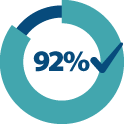
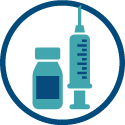
 Durham Region Health Department (DRHD) is responsible for communicating medical advice and guidance in a timely, accurate and accessible manner to help local partners and the public understand requirements and preventive actions they can take to minimize the spread of COVID-19. Public health communications occur through various venues and platforms including phone interactions, response to media requests, public appearances through local media outlets, participation in community events, participation on local planning tables, social media, and a comprehensive webpage on durham.ca.
Durham Region Health Department (DRHD) is responsible for communicating medical advice and guidance in a timely, accurate and accessible manner to help local partners and the public understand requirements and preventive actions they can take to minimize the spread of COVID-19. Public health communications occur through various venues and platforms including phone interactions, response to media requests, public appearances through local media outlets, participation in community events, participation on local planning tables, social media, and a comprehensive webpage on durham.ca.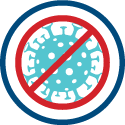 Durham Region Health Department (DRHD) is responsible for coordinating outbreak management support to institutions, including childcare centres and schools experiencing outbreaks. Outbreak control supports include following Chief Medical Officer of Health directives, ensuring appropriate use of personal protective equipment (PPE), increasing environmental sanitation, cleaning, and disinfection, and emphasizing the importance of hand hygiene among residents and staff. DRHD staff members also maintain contact with institutions experiencing outbreaks to provide support.
Durham Region Health Department (DRHD) is responsible for coordinating outbreak management support to institutions, including childcare centres and schools experiencing outbreaks. Outbreak control supports include following Chief Medical Officer of Health directives, ensuring appropriate use of personal protective equipment (PPE), increasing environmental sanitation, cleaning, and disinfection, and emphasizing the importance of hand hygiene among residents and staff. DRHD staff members also maintain contact with institutions experiencing outbreaks to provide support. Health Protection programs prevent or reduce the burden of food-borne and water-borne illnesses, injuries related to recreational water use, reduce exposure to health hazards, and promote the development of healthy natural and built environments. These programs also enable consistent and effective preparedness for, response to, and recovery from public health emergencies. Health Protection programs include Food Safety, Healthy Environments, Safe Water and Sewage Systems.
Health Protection programs prevent or reduce the burden of food-borne and water-borne illnesses, injuries related to recreational water use, reduce exposure to health hazards, and promote the development of healthy natural and built environments. These programs also enable consistent and effective preparedness for, response to, and recovery from public health emergencies. Health Protection programs include Food Safety, Healthy Environments, Safe Water and Sewage Systems.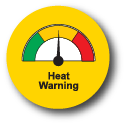
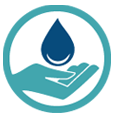 Issued
Issued 
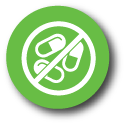 Durham Region Health Department (DRHD) monitors local opioid-related statistics, works with community stakeholders, and provides harm reduction services to prevent and reduce the number of opioid-related overdoses and deaths.
Durham Region Health Department (DRHD) monitors local opioid-related statistics, works with community stakeholders, and provides harm reduction services to prevent and reduce the number of opioid-related overdoses and deaths.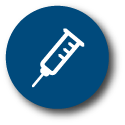 Responded to
Responded to 